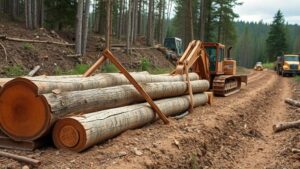Studying Ancient Floodplains to Locate Fossilized River Life
Studying Ancient Floodplains to Locate Fossilized River Life
The examination of ancient floodplains plays a crucial role in paleontological research, particularly in the quest to uncover fossilized river life. This article explores the methodologies employed in floodplain studies, the significance of these investigations in understanding ancient ecosystems, and case studies that highlight key findings in fossilized remains within floodplains. The objective is to present an authoritative overview of how ancient environments can yield insights into past biodiversity and ecological interactions.
Introduction to Floodplains
Floodplains are low-lying areas adjacent to rivers that are subject to periodic flooding. serve as critical habitats for a variety of species and are essential for understanding the evolution of river ecosystems. A floodplain’s sedimentary deposits often preserve evidence of biological activity, making them a prime location for paleontological exploration.
The Importance of Fossilized River Life
Identifying fossilized river life provides evidence of prehistoric biodiversity and can shed light on the ecological dynamics of ancient water systems. River ecosystems are often underrepresented in the fossil record, which emphasizes the need to study floodplains where organic remains are more likely to be preserved.
- Biostratigraphy: The analysis of fossil distribution aids in dating sediment layers.
- Paleoecology: Floodplain studies can inform researchers about past environmental conditions and species interactions.
Research Methodologies
A variety of methodologies are employed in the study of ancient floodplains, combining fieldwork with laboratory analysis to yield comprehensive results. Common techniques include:
- Core Sampling: This technique involves extracting cylindrical sections of sediment, allowing scientists to analyze stratigraphic layers for fossil remains.
- GIS Technology: Geographic Information Systems are used for spatial analysis, enabling researchers to map ancient floodplain locations accurately.
- Paleoenvironmental Reconstruction: This involves examining sediment composition, grain size, and fossil content to infer past environmental conditions.
Case Studies
Several important case studies illustrate the connection between floodplain studies and the discovery of fossilized river life. Notable examples include:
The Green River Formation, USA
The Green River Formation, spanning Wyoming, Utah, and Colorado, is renowned for its well-preserved fossil fish and aquatic creatures. Research conducted at this site, particularly in the Eocene epoch (approximately 56 to 34 million years ago), has revealed insights into riverine habitats and biodiversity at the time. Findings suggest that ancient floodplains hosted diverse fish species, contributing significantly to our knowledge of aquatic life evolution.
The Chengjiang Biota, China
Dating back over 518 million years, the Chengjiang Biota in Yunnan Province provides remarkable fossil evidence of early multicellular life in a floodplain environment. Studies have demonstrated that this area was a dynamic ecosystem during the Cambrian explosion, showcasing a variety of marine and terrestrial organisms. The sedimentary deposits of the floodplain continue to reveal new species, highlighting the importance of these ancient environments for understanding evolutionary history.
Challenges and Considerations
While the study of ancient floodplains is vital for understanding past ecosystems, it is not without challenges:
- Preservation Bias: Not all fossilized remains are preserved equally, leading to gaps in the fossil record.
- Environmental Changes: Past climatic and geological events can affect sediment deposition and thus the availability of fossils.
Conclusion
The study of ancient floodplains offers invaluable insights into the evolution of river ecosystems and the diversification of life. Employing a combination of research methodologies, scientists can reconstruct past environments and uncover the geological history of these significant landforms. As ongoing research continues to explore these rich areas, our understanding of ancient biodiversity and its implications for modern ecology will undoubtedly deepen.
Actionable Takeaways
- Engage with recent publications in paleontology and environmental science.
- Consider the implications of ancient ecosystems on current biodiversity conservation efforts.
- Explore opportunities for collaboration in interdisciplinary research involving geology, paleontology, and ecology.

